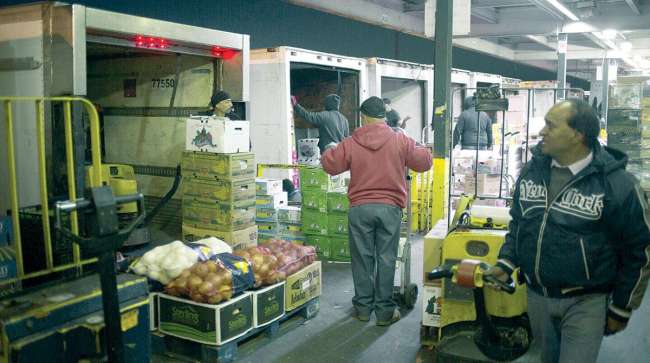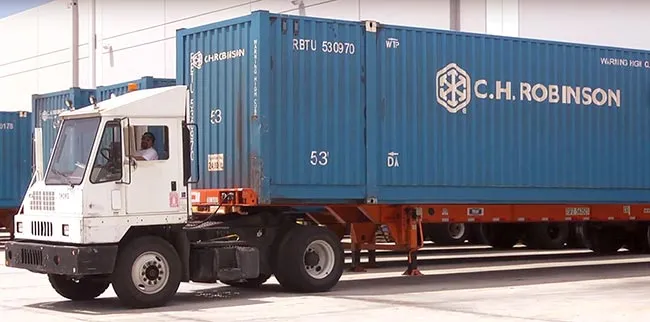Staff Reporter
Produce Season Fails to Boost Struggling Freight Market

[Stay on top of transportation news: Get TTNews in your inbox.]
The produce season did little to boost the slowdown in freight demand, as would be expected with normal seasonality.
The trucking industry relies on seasonal trends to predict when and where capacity will be needed. The produce season is an important benchmark, running February to July. But this year, various factors caused a weaker season amid an already slowing trucking sector.
“This is not a good news story by any stretch of the imagination,” said Andy Dyer, president of transportation management at AFS Logistics. “Even if we had a normal season from an agricultural standpoint, we’ve had more trucks available going into it than we normally would’ve expected. So, that would’ve muted it anyway.”
Dyer noted the heightened need for capacity during produce season means rates go up. But this year the trucking industry entered the produce season with weaker demand and excess capacity, only to be met with a lackluster harvest because of weather.

Beverage season this year is "an extra added shot in the arm," says C.H. Robinson's Ronnie Davis. (C.H. Robinson via YouTube)
“We talk about interconnectedness oftentimes in the concept of global economics and global trade, but it’s also across industries too,” Dyer said. “The trucking industry is absolutely affected by all the consumers of that service. And in this case, agricultural had soft demand. Hence it further exacerbated a soft truck market.”
American Trucking Associations’ seasonally adjusted data found for-hire truck tonnage fell 5.4% month-to-month in March. The index later found tonnage dipped 1.7% on a sequential basis in April. May did experience a slight increase at 2.4%. Each month also saw a year-over-year decline. ATA is expected to release its tonnage data for June later in the month.
“There was a nonexistent produce peak season,” said Dean Croke, principal analyst at DAT Freight & Analytics. “Normally reefer rates go up in the leadup to July 4. There’s normally a lot of momentum, there’s a lot of freight being positioned in markets ahead of the weekend celebrations. But the market is really drifting sideways.”

Croke
DAT will usually see spot rates increase 18 cents a mile on average between mid-April and late June. But this year the load board company detected an increase of only 10 cents. Croke believes there have been some shifts in the way people are buying produce.
“Normally, California produces anywhere up to half of the produce volumes in a typical year,” Croke said. “But last year it was drought, this year it was dozens of atmospheric conditions that really affected the entire northern coast of California, delaying, slowing down, even ruining some of the produce season growing areas. So, because California produces so much produce nationally, any impact in that market moved the national needle.”
Croke noted that national truckload volumes of produce are 8% lower than last year. California volumes are down 33%. He is hopeful that volumes may pick up assuming the produce season runs longer than it normally does.
“I think produce season started really late,” said TD Cowen analyst Jason Seidl. “That I think put extra pressure on some of the rates in 2Q and then it kind of kicked in and started to help tighten things up, as did beverage season. I think the combination of the late start to produce and a regular beverage season kind of tightened up capacity a little bit in the spot market. I do mean a little bit since rates are still depressed.”
Beverage season is another seasonal freight trend that runs alongside produce season from mid- May through mid-July. It is not as notable as produce season, but in most years helps add some additional volume into the freight market.
“The volumes for overall beverage, I think, for the year are going to be up slightly based on early-innings projected sales from what we’re hearing from our customers,” said Ronnie Davis, vice president of global customer operations at C.H. Robinson. “But where I do think is the silver lining, or maybe what helps here, is traditionally, this seasonal push of volume kind of just gets handed to the industry to have to cope with and deal with.”
Want more news? Listen to today's daily briefing above or go here for more info
Davis said he believes that beverage season this year was more embraced by the truckload community as it brought additional volume to the current recessionary freight trends, as opposed to past years when the season would usually mean added demand when capacity was already stressed.
“I don’t want to say the industry’s banking on this, but I do feel that it’s an extra added shot in the arm here relative to the recent trends that we’ve been seeing,” Davis said. “I do think that the beverage season will help with that. In years past when this surge of beverage business starts to take shape, when the industry is very tight, it kind of just forces greater complexity.”
C.H. Robinson Worldwide ranks No. 1 on the Transport Topics Top 100 list of the largest logistics companies in North America.

